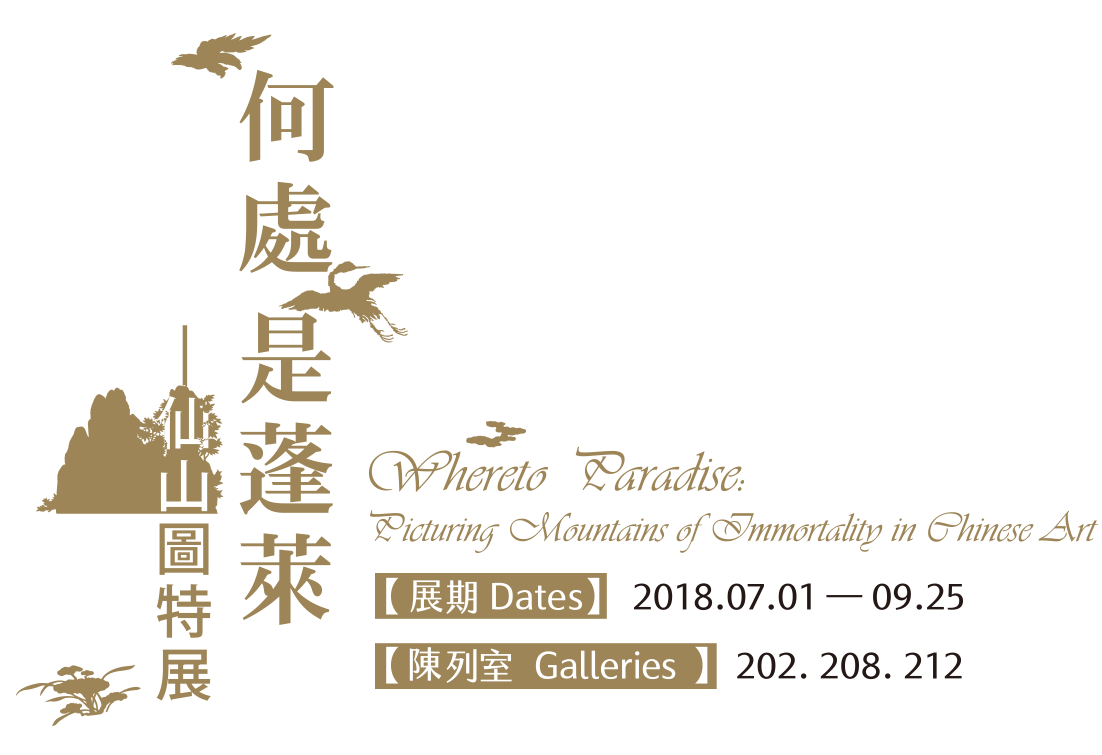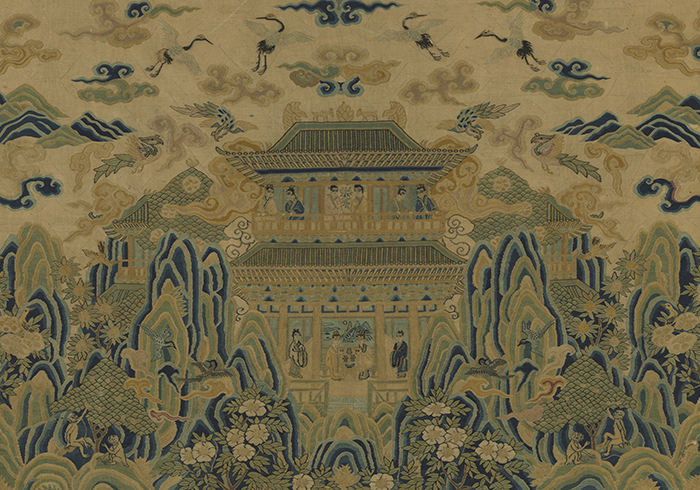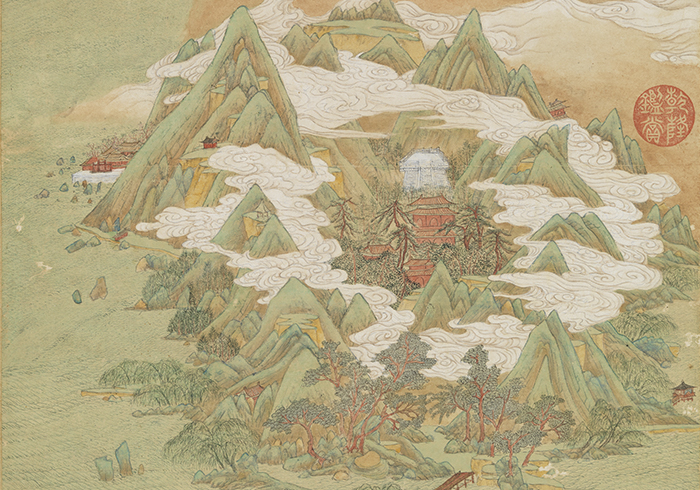In Chinese legend are found such terms as Three Sacred Mountains, Five Mountains, and Ten Continents and Three Islands, but what did these places actually look like? Painters in the past used the power of their imagination to try and visualize these immortal realms that include Kunlun, Penglai, Fanghu, and Yingzhou. And sage immortals there were often portrayed as living in opulent heavenly palaces and as having the supernatural ability to ride exotic beasts and fly in the sky or walk on the seas.
Hall in Mountains of the Immortals
- Anonymous, Song dynasty (960-1279)
- Album leaf, silk tapestry, 25.5 x 40.8 cm
The left and right sides of this work form an almost exact mirror image of each other but are skillfully differentiated. The foreground consists of layered rock forms with exotic flowers and fruit-laden trees. Monkeys are shown picking the fruit as birds fly among the landforms and up in the sky. In the middle of the composition, a large hall rises with figures facing each other drinking in front of a screen on the first floor. Paired figures appear on the second floor leaning on the railing to view the scenery. The birds in the air above include white cranes and phoenixes. All kinds of colorful clouds drift about, creating a realm of the immortals distinct from that of ordinary people.
The ornamented roof here is set off by the beautiful clouds to represent a place for immortals in a method similar to that depicted in a Song dynasty tomb excavated in Zhengzhou. The imagery of immortals by a railing also here accords with an inscription written by Su Shi (1037-1101) of the Northern Song for a painting by Guo Zhongshu (?-977) entitled "Towering Residences of Immortals": "A Daoist temple alight in the dim mist, who is it there leaning on a railing?" This became a motif used in the Song dynasty to define the opulent world of immortals.
Fanghu
- Wen Boren (1502-1575), Ming dynasty
- Hanging scroll, ink and colors on paper, 120.6 x 31.8 cm
Sima Qian in Records of the Grand Historian stated that the three sacred mountains rising from the seas are Penglai, Fangzhang, and Yingzhou, legend pointing to their location in the area known as Bohai. In the early Daoist text Liezi, "Fangzhang" is known as "Fanghu" and one of the Five Peaks along with Daiyu, Yuanqiao, Yingzhou, and Penglai.
This painting, done by the Wu School artist Wen Boren, uses blue-and-green colors to depict the island mountain of Fanghu "drifting" amidst a vast expanse of waves. Conical peaks appear on the waters and are dotted with buildings, the main one a terraced Daoist temple in the center surrounded by majestic pines and encircled by a band of clouds that gather and soar to the heights. It is much like the description in Records of the Grand Historian, which indicate the three sacred mountains have the mysterious quality of appearing similar to clouds from a distance, but as people approach they take abode below the water, and in the end are blown away by the wind. The cartouches in the upper right and lower left with the painting title and artist's inscription that form part of the painting surface derive from the custom of early Buddhist and Daoist painting.


